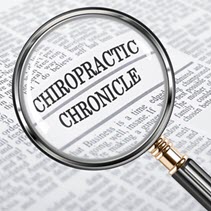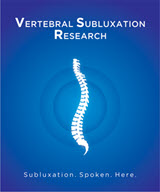New Research Sheds Light on Opioid Addiction

CLICK HERE to review the study
“Research is revealing that there is a relationship between abnormalities in the spine, the nervous system and brain” stated Dr. Matthew McCoy, a chiropractor, public health researcher and editor of the journal that published the study. “Basic science research shows that the proper development and function of the brain relies on proper structure and movement of the spine from an early age.” Research has shown not only that the developing brain relies on normal structural integrity and joint movement, but that complex neurochemical communication and pathways involved in helping humans to “feel good” are tied into spinal biomechanics and their related neurological pathways.
“It makes perfect sense once you understand the neurological connections between the spine, the brain and how we feel good added Dr. McCoy. “The seat of human emotion is the Limbic System and we know that this system extends all the way down the spinal cord. By removing obstructions in the spine, things like addiction and a sense of well being are affected.”
Even beyond addiction, researchers believe that the increase in the diagnosis of such disorders as ADHD, pervasive developmental disorder, Tourette’s Syndrome, obsessive compulsive disorder and other neurodevelopmental disorders, have their root in a “perfect storm” of abnormal spinal development coupled with cultural changes.
For decades addiction treatment programs have strived to find an answer for continued drug relapse in patients suffering from a multitude of addictions. There has been a major effort in recent years to determine the cellular and molecular changes that occur during the transition from initial drug use to compulsive intake. We now know many naturally occurring brain and spinal cord substances play a role in both emotions and pain reduction, leading to an increased sense of wellbeing.
According to McCoy structural shifts can occur in the spine and lead to obstruction of the nerves which distorts the flow of nerve information in the spinal cord and brain and it is this obstruction, called vertebral subluxations, that chiropractors correct.
The 21 year old young man reported on in the study was suffering from opiod addiction, anxiety, depression, insomnia, and cluster headaches. His medical doctors had placed him on four different medications in an attempt to manage his symptoms and withdrawl. The patient had dropped out of college 11 months prior due to the complaints affecting his daily life as well as the destructive coping mechanisms he had adopted.
The chiropractor examined the young man, took x-rays and found structural shifts in his neck, mid back and low back. These structural shifts can lead to obstruction of the nerves and it is this obstruction, called vertebral subluxations, that chiropractors correct. The x-rays also revealed scoliosis and a loss of the normal curve in his neck.
Following chiropractic care to reduce the vertebral subluxations and nerve obstructions this patient recovered from opioid addiction and was able to stop all medication usage. His headaches, anxiety, depression, and insomnia resolved and follow-up x-rays demonstrated improvement in the scoliosis and an improvement of the curve in his neck.
The study’s authors call for more research on the effects of chiropractic in the addicted population.
Contact Information:
Matthew McCoy DC, MPH
Annals of Vertebral Subluxation Research
http://www.vertebralsubluxationresearch.com

Blogs
- The Chiropractic Cartel: A Look Back at Bias in Accreditation and its Imact on Today's Profession
- Inside Montana's Chiropractic Monopoly: ACA & MCA's Brazen Board Takeover
- Concerns Grow About Control of the NY State Chiropractic Board by the ACA - Use of X-ray in NY Under Threat
- Reproductive Health Information and Chiropractic Care: Navigating New Privacy Regulations
- Navigating Substance Use Disorder (SUD) Consent: What Chiropractors Need to Know













